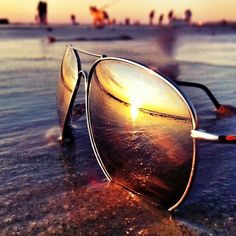 Skin cancer is a major concern among adults every year. In 2013, there were over 82,000 cases of skin cancer in the United States alone. Additionally, last year there were roughly 12,600 skin cancer-related deaths.
Skin cancer is a major concern among adults every year. In 2013, there were over 82,000 cases of skin cancer in the United States alone. Additionally, last year there were roughly 12,600 skin cancer-related deaths.
Skin cancer can start from an irregularity in your skin and develop into something more serious. It’s possible to keep your skin safe from the sun. Before getting into those options, like sunscreen and protective clothing, here are some skin cancer warning signs to look for:
Warning Signs of Skin Problems
The best way to detect skin problems is to pay close attention to changes in your skin. Look out for things like growths or discoloration. If you notice a new lesion or a change in the shape, color, or size of a pre-existing mole or patch of skin, you should seek the consultation of a physician. Often times something very small can lead to something greater. Don’t take the risk. See a doctor when you notice changes on your body.
Non-Sunscreen Protection Options
When it comes to keeping your skin safe from the sun, you have more that a few options to consider.
1. Avoidance
The best skin protection is avoidance. Try to stay out of the sun as much as possible. Keep cool in the shade, and your skin will thank you for it. If you must be in the sun, wear tightly woven clothing and a wide brim hat to keep the sun off of your skin. When clothing like that isn’t a possibility, use plenty of sunscreen.
2. Sunglasses
Wear sunglasses to protect the sensitive skin around your eyes. Children in particular are susceptible to sun damage, so it’s highly recommended you keep their eyes protected, too.
3. Tanning Beds
Some people think tanning beds are safe because you’re away from the sun. The reality is: you should avoid anything related to a tanning bed or a heat lamp. These devices not only have the same harmful UV rays as the sun, tanning beds include additional harmful UV radiation.
4. Sunscreen
When choosing a sunscreen, you should always aim for an SPF of 30 or higher. Sunscreen will not fully protect you, so try to keep in the shade as much as possible.
Other factors make a difference in what sunscreen to choose. For example, babies and toddlers require different types of protection than an adult. Here are some sunscreen options out there to try:
Sunscreen for Momentary Sun Exposure
If you don’t plan on spending time in the sun for more than a few minutes, an SPF of 30 should be okay. We recommend applying lotions that have an SPF in them so that you’re always protected—even if you’re sitting in traffic in your car! The sun’s damaging rays are everywhere.
Broad Spectrum Protection
It’s very important that your sunscreen has both ultraviolet A (UVA) and ultraviolet B (UVB) protection. This allows protection from both sides of the light spectrum. If you plan to stay in the sun for long periods of time — such as the beach or near a pool — you should use an SPF of at least 30 or higher. With an SPF of 30, you filter out 97 percent of the sun’s UV radiation. You could also try an SPF of 50, which filters out up to 98 percent of these rays.
Sunscreen For Children
Chemicals are especially harmful for children’s skin, so you should avoid sunscreen with PABA and oxybenzone when using it on a child. Sunscreens with zinc oxide and titanium dioxide tend to be okay for people who have sensitive skin, so it’s okay if these ingredients are in your children’s sunscreen.
One more tip for sunscreen for children: try using alternative applications, like sprays, with colorful packaging that are “fun” to use. Why? Because — and parents already know this — getting sunscreen on children can be a challenge. When using sprays, don’t spray on their faces. Instead, spray on the hands and spread on their faces.
Sunscreen For Sensitive Skin
If you have to manage allergic reactions, acne, or rosacea-prone skin, avoid sunscreens containing:
- Preservatives
- Fragrances
- PABA
- Oxybenzone
- Anything “greasy” in substance
Sunscreen For Dry Skin
People with dry skin will find great benefit from moisturizing sunscreens. Apply after showering to “lock in” the moisture to your skin, and be sure to re-apply every 30 minutes.
Have a favorite sunscreen you use daily? Share it in the comments below!
Photo Credit: Werner Kunz








